In early spring, there were reports of farmers throwing out hundreds of thousands of gallons of milk, burying perfectly good crops, and euthanizing hogs due to meat-processing-plant closures. Locust plagues in parts of Africa, toilet-paper shortages, and real risks of starvation for children dependent on meal programs got broad attention. Dire warnings of an impending global hunger pandemic were also issued.
Between social distancing, the lack of knowledge about COVID-19, and all that troubling news, it felt like we were on the edge of a cliff with a tornado pushing us onward. Apocalyptic prophecies seemed all too real against that backdrop. Then something amazing happened.
A Miracle!
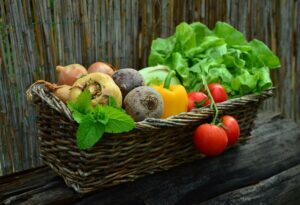
Image by congerdesign from Pixabay
Garden supply stores, plant sellers, seed companies, and hatcheries were swamped with orders. Internet searches on how to grow food, raise chickens, and be more self-sufficient sky-rocketed. Backyard by backyard, people began reclaiming their homegrown food heritage.
You May Also Enjoy:
“Food Security, Quality, and Convenience in the COVID-19 Era”
“How to Create Food Security for You and Your Family”
“5 Keys to Food Security in Extreme Weather, for Home Gardeners”
What started as panic has become passion. Many people have discovered how much they love growing food; keeping livestock; and spending more time at home learning, creating, and building. This is good for our mental and physical health, our personal food security, and our planet. We need to keep that momentum going.
Our Future Choices
We are living through a pivotal moment in history. The pandemic has pushed pause on many activities, giving us more time to think critically about the kind of world we want to create going forward. Toward that end, the rest of this article takes a hard look at some of the lessons COVID-19 has taught us, particularly about our food supply.
I’ll also wrap up with simple ideas to help you focus your efforts on food security in light of this assessment. Let’s get started.
Lessons From COVID-19
In many ways, COVID-19 has been a great teacher. It has shown us the weaknesses in our supply chains. For example, even if a safe and effective vaccine for this virus is made, due to current shortages, we may not have enough glass vials in which to distribute it.
It has highlighted the inequalities of our personal and community spaces. Images of people singing from balconies during the lockdown in Italy were inspiring. But what about the people who don’t have balconies and spent lockdown without windows or in unsafe places? For many, housing prices are so high and wages so low that COVID-19 has transformed basic human necessities like natural light and fresh air into unaffordable luxuries.
You May Also Enjoy:
“A Forager’s Guide to Running Out of Toilet Paper”
COVID-19 brought into stark relief the complexities and failures in our medical system, from shortages of personal protective equipment for medical staff to the lack of information on treatment protocols and the exorbitant hospital bills for survivors. It’s clear that we need to rethink medical care from the ground up.
Of course, the virus has also been a critical reminder about the vulnerabilities of our high-risk food systems. Even though we’ve known about the risks for years, now we’ve witnessed them play out in real time rather than just imagining them in some distant future.
Cheap Food
Weather events like drought, hurricanes, flooding, fires, pests, and pathogens have threatened food security for ages. Yes … the violence, regularity, and immense costs of catastrophic weather events are dramatically increasing as our climate changes.
You May Also Enjoy:
Still, pre-COVID, the caloric content available for each person in the U.S. and the inherent waste built into our system allowed us leeway to weather certain kinds of food-system shocks. Global trade also cushions the blow after many of these events.
Pecan Prices
For example, after hurricane Michael decimated pecan crops and orchards in 2018, pecan prices were expected to rise dramatically. However, since China put tariffs on nuts, Chinese demand for pecans declined. With low global demand, the price of pecans fell lower than in previous years. As a result, in the U.S., only the farmers (who needed a high pecan price to offset losses) suffered sticker shock over their reduced incomes.
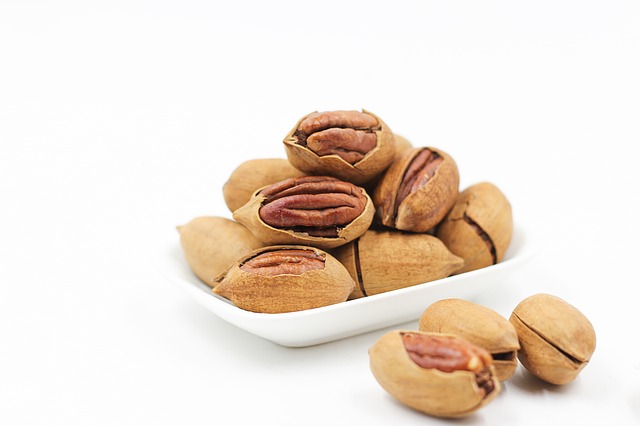
Frankly, the complexity of our global food systems, and the fact that commodities markets—not farmers—set prices, make baseline price stability easier to manage. As with the pecan example, much of the price burden across our food supply is shifted to farmers, not consumers. Wealthy, industrialized countries also leverage trade relationships, complex financial tools, and collective buying power to ensure price regularity.
In terms of paying less at the grocery store, these are good things. But for our farmers, the environment, human exploitation, and the long-term health of our food supply systems, it’s not the best strategy. If you want more personal insight into these complex issues, I highly recommend you read TGN author Judson Carroll’s thoughtful post, “Food Security, Quality, and Convenience in the COVID-19 Era.”
COVID-19 and Our Food Supply
COVID-19, however, is different than an isolated weather event, a single crop failure, or pricing systems that disadvantage farmers. The realities of this pandemic virus are global. They are felt by everyone, everywhere. Their actual impacts should make us rethink our beliefs about U.S. food security.
Here’s why.
Challenge #1: Supply and Demand
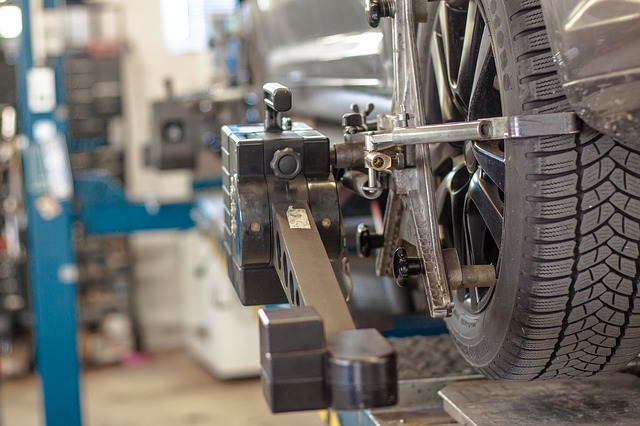
We are a nation of people who outsource many of our needs, such as dry cleaning, pet grooming, haircuts, auto repair, home repair, medical care, and more. One of the most necessary and basic things we routinely outsource is food preparation.
According to the USDA:
For a typical dollar spent in 2018 by U.S. consumers on domestically produced food, including both grocery store and eating out purchases, 37.4 cents went to pay for services provided by foodservice establishments, 14.9 cents to food processors, and 12.3 cents to food retailers.
Although we don’t have official 2019 data yet, the restaurant industry was on track to see record gains as of August 2020 estimates. That means that, pre-COVID, people were eating out more than ever. Inversely, people were buying fewer raw ingredients to prepare at home. As such, much of our food supply was geared toward wholesale restaurant markets.
Waste
As COVID closed restaurants and we had to eat at home, that sudden shift in demand meant that even though the U.S. had plenty of food, we couldn’t get it to the people who needed it. Crops rotted in the fields. Milk was dumped by the truckload. Farmers fretted over whether to bother planting at all. Everyone involved in the restaurant industry saw their near to long-term livelihoods wiped out in an instant.
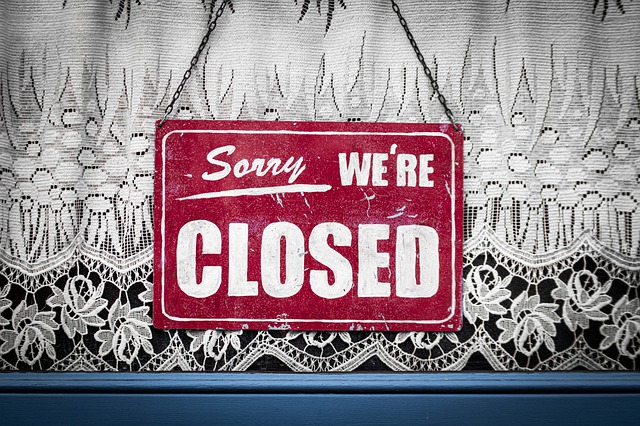
At home, we watched in horror at the extreme waste, while knowing that people were suffering hardships like we haven’t seen for generations. We also felt a real sense of panic as shelves emptied at alarming rates due to our own collective panic shopping.
New Normal
Now, months later, suppliers, shipping companies, and grocers are adjusting to the new demands of providing food directly to consumers. Shelves are filling back up and staying filled with greater regularity. Consumers are also doing less stockpiling. The USDA has assured us there are no nationwide food shortages.
The FDA has also allowed food companies to modify their ingredients due to COVID shortages, without relabeling, to help meet demand. In fact, the FDA has issued quite a few temporary and interim guidelines to make it possible for businesses to operate with regularity during this crisis.
We don’t know yet how many farmers folded or will be forced to file bankruptcy under the pressure of that sudden demand inversion. We also don’t know how many restaurants won’t reopen.
Even though things are a bit more stable now, the tension between wholesale and retail demand is likely to be in flux for the foreseeable future. Also, supply and demand aren’t the only forces testing our supply systems. There are a few more we need to look at, such as factory-farming risks.
Challenge #2: Food Factory Closures
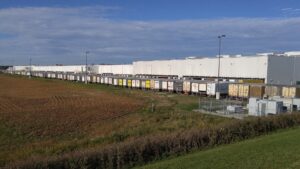
Image by Edmund DelSol from Pixabay
It’s no secret that the farms that supply restaurants and grocery stores are run like factories. They are mechanized and automated in every way they can be. When human labor is required, that, too, is mechanized to the extent possible using assembly-line methods.
For example, in a chicken-processing plant, one person might kill, another cut off the head and another the feet, another make the slit in the carcass, another remove the viscera, another do a feather check, another put chickens on a rack, another push the rack into the fumigator and another into the packaging area, and so on.
I am imagining this based on descriptions I’ve heard. So, my details may be a bit off. But you get the point. Essentially, a line of people perform repetitive tasks to maximize overall efficiency.
Mechanized Humans
This kind of mechanized human labor is physically, mentally, and emotionally stressful. People in these jobs tend to suffer a wide range of related health problems. Those environments also put them at great risk for exposure to and complications from COVID-19.
Since these jobs require little skill, despite the health risks, they also tend to be low wage. Many workers can’t afford to take off for illness, so they work sick. Some can’t afford single-family homes, so they may live in crowded multifamily spaces. This means that viruses shared at work spread quickly within a broader community, creating more challenges.
Meat-processing plants are clearly at risk for continued interruptions from COVID-19 outbreaks for these reasons. Fruit and vegetable packing plants, food distribution centers, and other food manufacturing environments also face these types of risks from outbreaks.
In other words, fresh foods that can’t be processed by machines or single operators are going to continue to be a weak point in our food system until we beat the virus.
Challenge #3: Potential Price Increases
COVID-19 has fundamentally changed the way we do business. Think of the plexiglass going up at each check stand, the cart wipers and cleaning stations at every store, the rearranging of aisles to allow for social distancing. These are just the tip of the iceberg on all the adjustments businesses have made to be able to operate during the pandemic.
Basically, every operator along every part of our supply line has spent money to become COVID-19 compliant. Processors, packers, warehouse workers, trucking companies, gas stations, railways, airlines, barges, accounting offices, and so on have all invested in new safety measures, training, and more.
These costs must be paid for at some point. In many places, price freezes and price-gouging laws have delayed inevitable price increases. Yet, you can bet that dividend earners in publicly traded companies won’t willingly bear these operating losses long-term. Small-business owners will also have to find ways to remain profitable even with increased costs of doing business.
CPI Conundrum
Right now, we are in an unusual situation where the consumer price index (CPI) for March through May has declined to levels below where they were when COVID-19 started. In part, this is because low gas prices, less frequent travel, reduced clothing prices, and reduced auto insurance rates helped offset the rising costs of shelter, medical care, and household furnishings and operations.
But, if you really think about it, it’s not that our cost of living has declined, it’s that we’ve scaled back our spending to essential goods and services only. If we were really comparing apples to apples, not apples to some alternate-universe simulation of apples, our cost experience would be quite different.
Our calculations on cost of living might also be very different when all the medical bills roll in and when taxpayers have to pick up the tab on the trillions spent on COVID relief packages. What about when we start cashing our post-COVID paychecks and find they fall short of our pre-COVID earnings? This question brings us to the next food-security challenge.
Challenge #4: Economic Losses
Job loss, post-COVID, has been unprecedented. We are unquestionably in a recession. Though some jobs may return as the economy reopens, there are also a significant number of jobs that will never return or won’t be as financially rewarding when they do.
We know that the 2008 recession impacted our earnings in the following ways:
- Cumulative financial losses from those who graduated during the recession ranged from $60,000–$100,000 on average over a 10-year period.
- The “gig-economy” became normal, with 1 out of 3 people working in temporary or contract positions rather than in long-term employment.
- Newly created jobs paid less, had fewer benefits, and offered less long-term security.
- Savings levels for Americans, on average, became $0.
We don’t know yet what will happen after this COVID-19 recession. But if our experience from 2008 is any indicator, it doesn’t look good.
Even if food prices miraculously stay low, if your paycheck never returns to its pre-virus pay rate, the percentage of your income spent just on groceries may go way up. Or, perhaps you’ll just buy smaller quantities of lower-priced food. That was, in fact, what most people did after the last recession. Data shows that we cut food spending to keep up with other bills until about 2016.
From my perspective, I see a very real risk that many people will have to swap quality food for cheap food to make ends meet. For those already living on cheap food, then buying less food becomes the inevitable next step.
Challenge #5: Uncertainty Factor
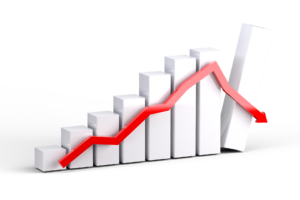
Image by Mediamodifier from Pixabay
The previous four challenges are easily researchable, predictable trends that are happening now. They stink. Yet, they are basically to be expected during a pandemic virus that leads to a recession. But what about the things we don’t know?
There’s been a lot about COVID-19 that doesn’t follow normal virus behavior. I’m not talking about conspiracy theories. I’m talking about what we know at this point:
- The virus is lethal to some and mild for others.
- The virus can be transmitted before it’s even detected by its hosts.
- This virus isn’t cyclical like most flus and shows no signs of slowing in warm weather.
- This virus causes inexplicable latent symptoms in some people and is being likened to Chronic Fatigue Syndrome.
- We don’t know if antibodies provide long-term protection against reinfection.
- The CDC says, “We are still learning about this virus, but it appears that it can spread from people to animals in some situations.”
This is not a comprehensive list. This is just the short list of reasons why I, personally, act with extreme caution to avoid inadvertently catching and spreading the virus.
I’m just a homesteader and writer, not an epidemiologist. But renowned epidemiologists with collective eons of experience are scratching their head over this virus and acting with extreme caution. That fact alone makes me certain there’s much more to learn about COVID-19 before we can move forward with confidence.
Also, frankly, all this uncertainty is making lots of other people and systems go crazy. From COVID parties that turn to super-spreader events to tantrums over masks in grocery stores, there’s a lot of nutty stuff going on all around us. Here’s an example that recently flabbergasted me.
Stock Market Risks
How did stock markets just have their best quarter in 20 years while the economy is tanking? As far as I can tell, stock market investors seem to be completely ruled by their emotions when it comes to buying and selling, rather than by our COVID-19 realities. Frankly, I think investors are so eager to see signs of hope, they are imagining them.
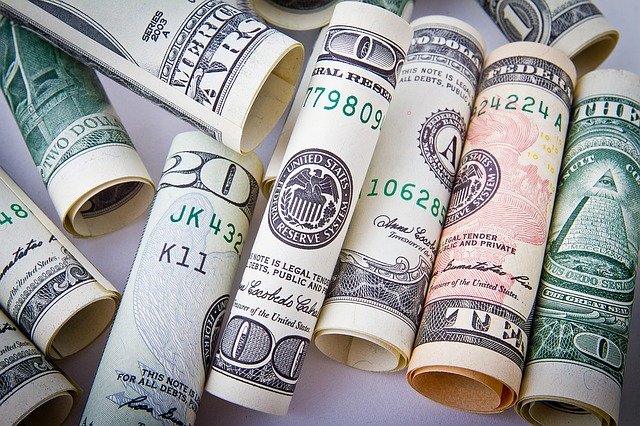
Image by NikolayFrolochkin from Pixabay
Fairy tales like that quarterly performance seem all too reminiscent of the underlying causes of the 2008 Great Recession. That event, as we already covered, resulted in lots of people having to reduce their food standards to make ends meet.
Other Viruses
This is also just one virus. New virus strains are possible at any point. As I write, a new swine flu called G4 EA H1N1 has been detected in pigs in China. According to researchers, it has pandemic potential, though with diligence it is also controllable in these early stages. Ebola outbreaks keep recurring, and soon we’ll have our normal flu season to contend with.
Uncertain Times
I don’t want to spread fear. But the fact is, we are in uncharted territory and we simply don’t know what all our risks are yet. We know how to manage our food supply during a hurricane, fires, floods, and now during a pandemic. But do we know how to manage it during a pandemic with multiple weather events, a new virus outbreak, epic droughts, and increasing global conflicts?
This uncertainty can make people act in unexpected ways. We all know there have been some pretty ugly moments. But there have also been a lot of positive responses.
The Good News!
The Black Lives Matter movement, for instance, is shining a light on issues that would have been easier to ignore when the world wasn’t on pause for a pandemic. Pollution vanishing and city skylines becoming visible, stargazing without constant airplane interruptions, and wildlife visiting formerly populated areas are beautiful side benefits of us staying home amidst all this uncertainty. These events show us how much more beautiful our world could be if we focus on healing our environments.

Image by Free-Photos from Pixabay
Also, going back to the beginning of this article, what a joy to see heirloom seed providers take down their websites for maintenance because the demand was literally overwhelming! I am sorry for their extra work and stress caused by the unexpected demand. Yet the idea of all that homegrown food appearing on tables everywhere has been a light in the darkness.
Moving Forward
Despite the traumatic shocks our supply, demand, and distribution systems suffered this year, one other important thing stood out to me. Our industrial food system surprised me with its resilience so far.
Trust me … that’s not resounding praise. But I am grateful that it is working well enough to allow us time to adjust, rethink, and hopefully make some much-needed changes. However, now is not the time to relax and assume that the worst is behind us.
We should continue to make preparations for short-term outages and demand long-term improvements to our food systems. I can’t in good conscience recommend that you start hoarding food indiscriminately when experts are telling us to shop in two-week increments so we can all eat. But there are ways to stock up safely and increase your home food security that won’t set off more panic-buying frenzies.
Let’s look at 10 things you can do now to feel more confident given our current food-supply challenges.
10-Step Food Security Action Plan
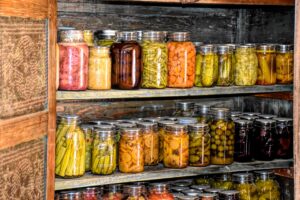
Image by Ray Shrewsberry from Pixabay
#1. Buy in Bulk
Bulk stores are now operating at or above their pre-COVID levels. So, rather than wiping out the pasta shelf at your local grocery, buy your dry and canned goods at bulk goods warehouses.
#2. Shop Restaurants
Some restaurants have turned into makeshift grocery stores so they can remain open. As such, you may be able to make arrangements with them to buy in bulk from their food suppliers for small service fees.
#3. Order Online
Many online restaurant retailers will also sell to the general public. You’ll have to deal with high minimum order requirements. So, consider making a restaurant buyers’ club in your community to leverage your group buying power and get wholesale restaurant prices. Pick up orders in person to avoid shipping delays or extra costs when possible.
#4. Stock Up Slowly
If those first 3 options aren’t doable, then stock up slowly. Perhaps cut out some of your luxury items like junk food and redirect those funds to slowly building a supply of dried and canned goods. To get the most bang for your buck, focus on high-calorie, high-protein, or nutrient-loaded items. Beans, nuts, dried fruits, rice, quinoa, wheat kernels, and more are all great, easy-to-store options.
#5. Grow/Raise Your Own
Given that meat and fresh vegetables are clearly weak points in our food supply during this pandemic, if you want to grow and raise your own, that’s where you should focus your efforts. Save growing calorie crops for later.
Right now, raise chickens or ducks for eggs or meat.
Raise rabbits for meat.
You May Also Enjoy:
“Meat Rabbits: Raise Half Your Protein in 10 Minutes Per Day (VIDEO)”
Grow a vegetable garden that supplies your lettuce, kale, chard, beets, turnips, cucumbers, peppers, tomatoes, string beans, basil, and more. That will make meals more interesting, even if you get most of your calories from dried goods. Plus, that will improve your overall health by getting all those fresh, potent phytonutrients into your diet.
Also, make sure you stock up on seeds or learn to save your own, so you don’t run out.
#6. Share Extras
Right now, more than ever, we need to build goodwill in our communities. Even though we must practice social distancing, virus transmissions from food products are considered low risk. So, if you can find opportunities to share any excess food you have with your community, you create goodwill that often pays you back later with dividends.
#7. Support Local Farmers
Local farms don’t have the same distribution challenges as “Big Ag” does. If you buy direct, subscribe to a CSA, or otherwise support your local farmers, you get access to fresh food. But you also ensure that local farms continue to be able to serve the broader community just in case things get worse.
You May Also Enjoy:
#8. Forage More
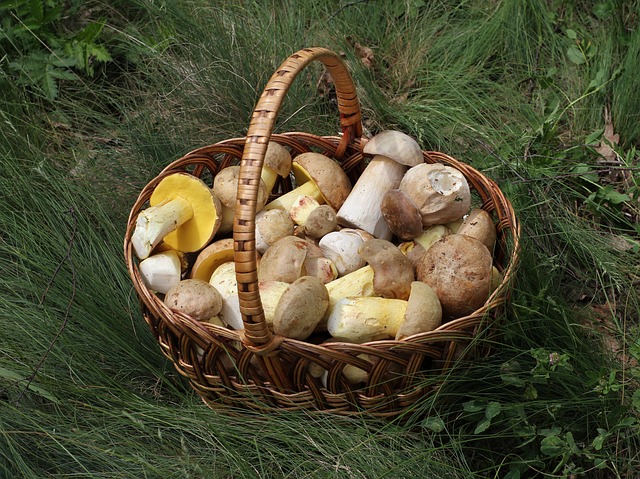
It’s incredible how much food many homeowners have in their own backyard without realizing it. At my old suburban residence, I had giant edible bolete mushrooms and sumptuous dandelion greens exploding in parts of my yard. Had I only known how to identify and prepare them back then, I would have feasted for free a lot more often!
You May Also Enjoy:
#9. Make Extra Money
We don’t know what comes next or how long this will last. So, if you have hobbies or talents that can earn you extra money or be used in barter, why not put them to good use? In uncertain times, having a little put away for emergencies, just in case prices climb quickly or there’s a sale on your favorite food items, gives you more freedom in your decision-making.
#10. Act Long-Term
Those first 9 things can help you be more resilient now. But we really need to be in this in for the long-term.
Make plans to grow half of your food.
Get involved in food policy at the local level. Call your legislators to demand that local growers and producers be given preferential treatment over big corporations.
You May Also Enjoy:
“The Ongoing Farmer Crisis (and What You Can Do About It)”
“3 Ways to Garden Without Land”
Start community gardens, food forests, and edible landscapes.
Your long-term food-security projects will depend on your resources, interests, and ambitions. But the biggest lesson that COVID-19 has taught us about our food supply is that ensuring our personal food security is up to us.
What Do You Think?
Do you have ideas on how to increase food security? Please share them with our community via the comments below.

Tasha Greer is a regular contributor to The Grow Network and has cowritten several e-books with Marjory Wildcraft. The author of “Grow Your Own Spices” (December 2020), she also blogs for MorningChores.com and Mother Earth News. For more tips on homesteading and herb and spice gardening, follow Tasha at Simplestead.com.
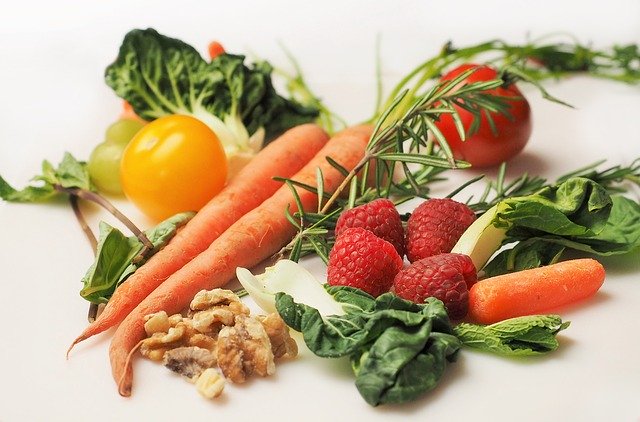
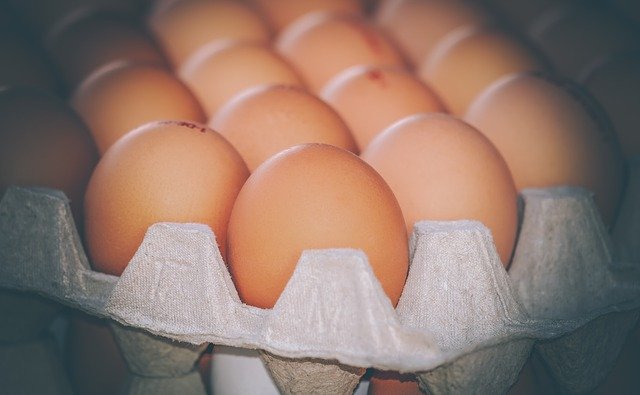







COMMENTS(9)
Tasha, while I appreciate the valuable information in this article, I take exception to putting BLM under “Good News.” I do not see looting, shooting, and the various other activities around the BLM movement as “Good News.” The leaders of BLM are knowingly using the principles of Marxism and have the purpose of pulling down our current U.S. government to replace it with something like what has happened in Venezuela. This is also not good news. The United States is not systemically racist! As a citizen born and raised in the Southeast United States I can say that I have seen incredible change in the status, possibities and potential for Blacks in our country. They are not being oppressed in this society. It is unfortunate that many black people choose to commit crimes, use drugs and take advantage of other people, including and especially other blacks. It is really unfortunate that so many black babies are being aborted.
I personally had an experience as a teenager that shows this: I rode my 10-speed bicycle to the downtown public library. When I came out and unlocked my bike, a young black man came up to me, told me he had an emergency and asked if he could borrow my bicycle. He promised to return it. In my naivete I allowed him to take it. I never saw that bicycle again. I worked a job to buy another one with my own money. I had to face my parents’ disappointment and disbelief that I allowed this to happen when I was picked up from the library. Did this experience make me racist? No, people do stupid things to one another, no matter what color their skin may be. Let’s stop validating victims and take personal responsibility and expect others to do the same.
Hey Karen,
Thank you so much for reading and taking the time to comment. I am a big fan of the stories and experiences you’ve shared on TGN. So it was exciting to see your name pop up here commenting on one of my articles!
I totally understand that not everyone sees the BLM movement as positive. So even though that example may not strike a chord with you, I do hope that you (and all or our readers) are able to find things to be optimistic about. I think these challenging times are easier to get through when you can find some light in the darkness.
Thank you again for reading! My best to you! Tasha
You are 100% right Karen. I was very disappointed to see this in this site. God bless you.
Interesting and thoughtful article, thank you.
May I politely suggest to Karen that she read ‘One Person, No Vote’ by Carol Anderson which may help shed light on the BLM movement.
Hey Jennifer,
Thank you for reading and for sharing the book recommendation. I haven’t read that one yet, so I’ll need to put it on my list!
Best to you,
Tasha
Hi, Karen
Your reply is very well spoken. Thank you for your comment on this incredibly important aspect of the “resilence movement”. It will all be for naught if we don’t shake off the corrosive idea that our goodness and self-worth depends upon our ability to excuse, ignore, or put a happy face on wrongdoing. The BLM movement is NOT positive in ANY way, and is ideologically opposed to us and what we are doing. If we refuse to acknowledge that, then our hard work will eventually all be for naught and we will have done nothing but aided a lot of bad people in institutionalizing hunger, fear and misery across all aspects of our society, except among the controlling elites, of course. I don’t get the sense that anyone at TGN wants that (isn’t that the opposite of our mission?), so why should we be silent instead of pointing it out and supporting one another in the face of it?
BTW, I sympathize with your story, and wanted to be sure that you receive some explicit acknowledgement of your experience. Been there, done that, myself, a little later in life when I “lived the dream” of residing in a highly integrated urban neighborhood. If ‘multicultural’ life had been the wonderful experience we’re so often told it is, I’d still be there. Sadly, many of the residents left such a bad taste in my mouth with their disrespectful and out-of-control behavior (towards each other as well as towards everybody else) that I have no sympathy whatsoever for their “cause”. And as for all the individuals and organizations trying to turn things around and get people off dependency, into good food and self reliance, away from violence, etc., very few have any real staying power. It’s incredibly difficult to lift up communities that actively detest and resist the fundamental values that make the healthy, productive and self-sufficient lifestyle possible. What community people SAY they want, and what they are willing to DO to get it, once they find out what fulfilling their wants requires, are generally miles apart. Ask me how I know about that…
Anyway, in all other respects, I, too, enjoyed the article and DO appreciate its positive tone. Plus, I learned some new things, such as buying from restaurants, and for that I am grateful!
Re: Tasha, I have one comment on the stock market: most of the crazy disconnect is directly attributable to the monetary policies of the Federal Reserve. During the last three economic cycles of crisis and the containment of crisis, increasingly aggressive and exotic interventions by the Fed, all designed to keep the economy afloat and the markets bouyed up, have distorted stock, bond, housing, precious metal, and all other asset prices. The ballooning national debt, driven partly by the growth of the welfare state (and the military, too, let’s not leave any guilty parties out of the blame!), has forced the Fed to cut interest rates to nearly zero, so as to avoid the U.S owing so much on interest payments (which increase exponentially with the growth of the debt) that we would have to default. As a result, responsible people who save money are getting financially clobbered. (And where are the protests about that??!?) Meanwhile, the low, low interest rates plus all the E-Z money loans available to be snapped up by the investment banks and any businesses that have a pulse, has resulted in ballooning corporate debt that was spent largely on market speculation and share buybacks. These both drive the markets higher. If interest rates ever rise, most of that debt will become too expensive to repay since it was squandered on non-productive uses. So, interest rates will never rise again until the final, shuddering moment before America defaults or the entire global economy collapses (the sad scenario for which many of us are developing our self-sufficiency skills).
Because there is no money to be made “honestly” by saving, any more, or even by purchasing bonds and thereby helping to fund roads, bridges and business expansion, masses of people have jumped into the stock market thinking they’re going to make a quick buck that way. While the strategy is working for the moment, courtesy of the Fed providing 100% of the liquidity (i.e., the trillions of worthless new dollars being electronically created and handed out like candy to banks, cronies, big businesses and anybody except those who work hard enough to look good on paper while being wiped out in taxes), the phony markets will crash at some point, leaving those who don’t know what’s about to happen, out of luck. But the ‘underprivileged’ will have continued to accrue their living subsidies uninterrupted while those who work will continue to be bled by taxation and inflation as well as low interest rates. The moral of the story is that those who are following the Cloward-Piven strategy to expand the welfare state, divide and terrorize the population, and turn honest, hardworking people into debt slaves, are not people in whom we should be finding good or for whom we should be making excuses. Nobody putting in the time and effort to develop self-sufficiency should be expected to believe that people who sow fear and destruction to get their way, are legitimate protesters or that their gripes should be serviced by us. If we really want to ‘acknowledge people as their “authentic selves”‘, then we need to acknowledge that some people are authentic predators who prefer to make their living by lying, stealing and destroying the livelihoods (or lives) of people around them, and treat them accordingly. And, yes, I very much put the banksters and the neocon war hawks in this category, as well, although they operate on very different levels from the street rabble. Please don’t reply that that BLM/Antifa shouldn’t be held accountable for their actions because the government has been causing its own form of devistation and ripping people off practically forever, as well. I think you’d find little argument at TGN that a big purpose of the self-sufficiency movement is to fight off the government, but we do it by making ourselves strong, not by killing and destroying the work of others!
BLM/Antifa peddle the “suffering” (such as it is) of their favored racial groups as an unassailable excuse for whatever they do. That should cut no ice with anybody. We’ve all been aggrieved. We’ve all experienced deprivation, been dumped on, ignored and used by somebody, suffered loss, and been discriminated against in some fashion or another. But so far I haven’t heard anybody at TGN advocate arson, looting or homicide as a proper response to the ills in our lives. We choose to “fight back” by rising above our problems, supporting one another and manifesting good in the world instead of bleeding our hurts all over innocent bystanders. It’s not right to minimize our efforts by advocating ‘acceptance’ of those who lie to themselves about their situations and take the easy way out, to everybody else’s detriment. So, please, let’s respect those who rise above, by not perpetuating the fake BLM/Antifa narratives designed to tear them down and replace their efforts with angry, destructive chaos. Thank you. Otherwise, great article, and appreciated.
I like your article except for the matter brought up by the newbie homesteader that you placed BLM actions under good news. I agree with the protestors that they need change, but BLM is not all the protestors and many black people do not agree with the way they operate.
Response to remarks about Covid-19:
I accept this is a rant but it needs to be said and often. Everything else on TGN and in this article has been invaluable and essential and I read every word and take it to heart. Appreciate all the work and contributors.
There is a huge amount of knowledge that has been compiled from studies, front line experiences and data from all over the world. The problem is that the true information is censored and distorted on main stream media. Their political agenda is clear and obvious.
The failures in our medical system have been in place for a very long time. Pharma controls have left us one of the most drug dependent, unhealthy citizenry in the civilized world. Covid-19 did not cause this. Add government interventions, forced deadly procedures, withholding proven life saving medications and you have a perfect formula for a man made disaster.
“There’s been a lot about COVID-19 that doesn’t follow normal virus behavior. I’m not talking about conspiracy theories. I’m talking about what we know at this point:”
The lines that follow this statement display an uninformed and naive assessment of the state we are in. Leading world class scientists, doctors, virologists, epidemiologists and many other experts have a level of understanding far beyond the propaganda fed to the public. This virus has run the same course as all the others past and all the ones to come. It has over 80% of the structure of other corona viruses. Do your homework. Viruses are part of our environment, inside and out. They play important roles in our survival as a species. Only a healthy immune system can ever protect you from pathogens. And only your immune system can distinguish the good from the bad.
It is a conspiracy but it is not theoretical. We live in a Constitutional Republic and our guaranteed freedoms are being removed and replaced by Chinese style dogma and social control. This is a pandemic of the mind.
Cover your face if you want but don’t pretend it is for health reasons. No thinking person can truly believe that. No science supports hiding in your home, trapping waste and bacteria and re breathing it over and over or distancing your friends and neighbors and loved ones. Witness all the pockets of sanity in the world that avoided these measures and fared far better than the rest of us. This could all end tomorrow with the collective courage of the nation to say no more to oppressive government.
My last comment (thankfully?) is that it is clear that if this outbreak had been faced like every flu season past, protecting the vulnerable, sharing information as it was learned and being open and honest about it, tens of thousands of lives could have been saved. Even with that said, the mortality rate is 0.26%. That is a 99.74% chance of survival. I like those odds. Nothing there to be afraid of. Believe what you will.
Covid-19 is a hot button for everyone. It has grown into a mental monster that is consuming our society and we are letting it happen. We The People hold the ultimate sovereignty, not the government, they work for us and we all have a personal responsibility to save and preserve our country.
Hi Readers,
My reference to BLM in the article above has triggered some very detailed comments that fall outside the scope of what I understand to be the mission of TGN. So, out of respect for the diversity of our readership, I’d like to clarify that my reference to the Black Lives Matter movement was related to peaceful protesters raising awareness about the wrongful deaths of George Floyd and others. That has been extremely hopeful to me. But this is my personal opinion and not an endorsement by TGN.
TGN, as I understand it, is apolitical in its goal to put homegrown food on every table. It is also a community of people from all walks of life, religions, races, and nationalities who are trying to uplift each other by sharing skills and information to overcome challenges related to growing food and living healthy.
Toward that end, I made a mistake in mentioning BLM as an example. I don’t want to detract from the bigger issue of food security for all. So, I’m going to refrain from commenting further on that subject. But if you have questions or comments about increasing food security, TGN is a great resource and I’ll also do my best to answer questions.
I’ve been growing and raising the majority of my food for over 6 years. I personally was not impacted at all by any of these food supply issues. I was also able to supply some friends and family members with eggs, milk, and seeds and help them establish their own “pandemic” gardens. It was a wonderful feeling to be food secure and able to share my skills. But it was also painful to see so many people unprepared and struggling.
Now more than ever, I really want to encourage as many people as I can reach to focus on homegrown food and building community. Thanks for reading!
Tasha